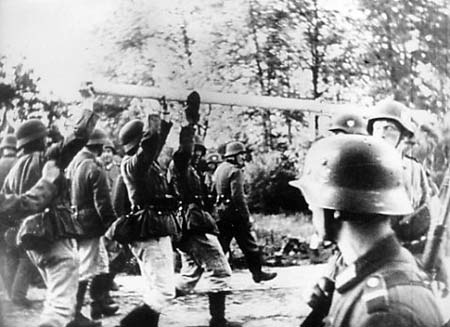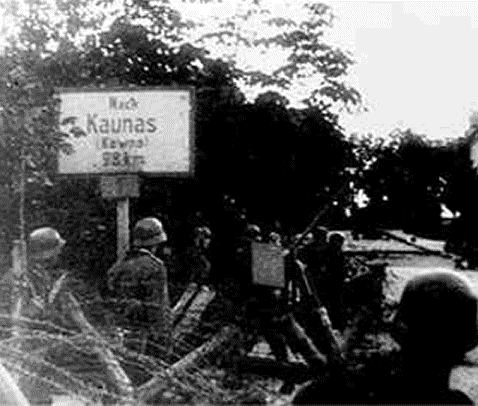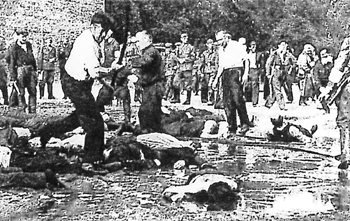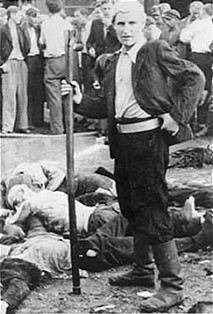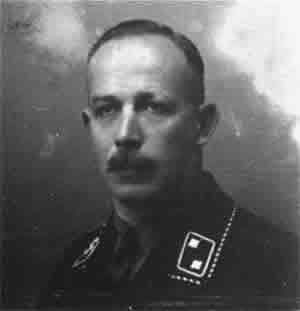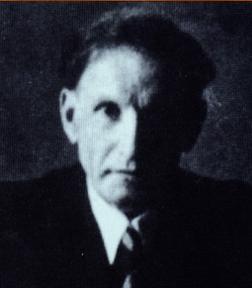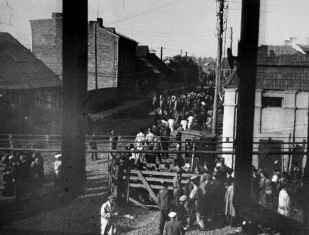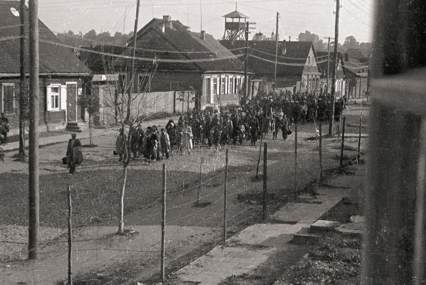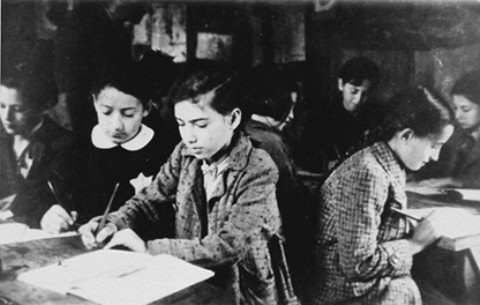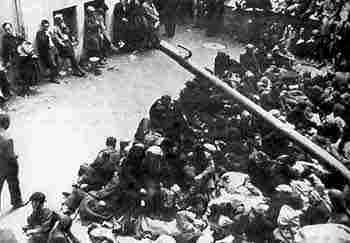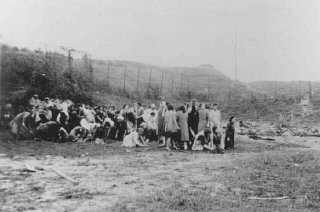Holocaust Education & Archive Research Team |
Ghettos
Kovno Introduction to the Ghettos of the Holocaust
Jewish Ghettos The Judenrat Judenrat Leaders Prominent Jews
| ||||||||||||||||||||||||||||||||||||||||||||||||||||||||||||||
The Kovno Ghetto (Kaunas)
The town of Kovno was established in the year 1030 by the Lithuanian prince Koinas. Jaroslav, at the convergence of the Nemunas and Neris rivers. The first settlement built stands on ground of the present day Kaunas old town, however due to continual invasions and war, the town was demolished and rebuilt fourteen consecutive times. Only in the year 1410, after the prince of Lithuania Vytovet (Vytautas) defeated the Germans near the villages of Grunwald and Tannenberg in Prussia, did the building of the town started progressing independently.
The first Jews to arrive in Lithuania settled in Trakai, Grodno, and Brisk, and later came to Kovno as merchants. Soon, however, Jewish families began settling there permanently.
Throughout history the Jews of Kovno were periodically exiled by the town’s leaders and were forced on many occasions to leave Kovno. Their good fortune was that they did not need to go far; they were allowed to settle in the nearby Vilijampole. They would tend to stay there for some time before returning slowly to Kovno, only to start the cycle again. During almost every new ruler, they were once again expelled from Kovno.
In 1503, Alexander the First received a large amount of money and revoked the expulsion of the Jews, allowing them to return and returning some of their possessions. The residents of Vilijampole returned to the area immediately.
When Sigmund took control of the kingdom, he encouraged industry and commerce. During his rule, Jews came to the town without trouble or restriction and the Christian merchants now wanted Jews in town, for the Jews assisted them in controlling the revenue and taxation that was sent to Prussia.
Kovno soon become a center of Jewish learning. The yeshiva in Slobodka, an impoverished district of the city, was one of Europe's most prestigious institutions of higher Jewish learning. Kovno had a rich and varied Jewish culture. The city had almost 100 Jewish organizations, 40 synagogues, many Yiddish schools, 4 Hebrew high schools, a Jewish hospital, and scores of Jewish-owned businesses. It was also an important Zionist center.
In 1795, during the third division of Poland, the Kovno area was annexed to the Russian Empire. During World War I, in 1915, the town was conquered by Germany, although it was soon liberated from the German occupants and became part of Poland. Kovno became the temporary capital of Lithuania in the years 1919-1939.
At the end of 19th century the city of Kaunas was fortified, and by 1890 it was encircled by eight forts and nine gun batteries. The construction of the Ninth Fort began in 1902 and was completed on the eve of First World War. From 1924-on Ninth Fort was used as the city of Kovnos' prison.
Read more about the Ninth Fort [Here].
In WW1 the first to suffer in result of the war among the Lithuanian Jews were the Jews of Kovno. Soon after the outbreak of war on the first of August 1914, thousands of residents left the town. As the warfront approached, a few thousand Jews transferred to Vilna and other settlements in the area. On May 18, 1915, the head of the Russian army, the great prince Nikolai Nikolaiovich ordered that all the Jews, without exception, be expelled from the city of Kovno.
This order was immediately executed with no pity or consideration toward even those who were sick or handicapped. The town was cleared of Jews. Jewish apartments and businesses were officially shut down by the police and military authorities; Lithuanian Christians took over the Jews’ possessions and looted their homes.
Only a minor part of the exiled Jews were able to find shelter in Vilna; most were taken south and east, deep into Russia, to areas far from the border. After WW1 the Jews of Kovno were represented in all the various prominent municipal committees, and a large number of Jewish clerks were employed by various institutions at this time.
This situation continued until the end of 1926, when there was a revolution of sorts in December. Nationalistic Lithuanians (Tautininkai) politically took control of Lithuania, abolishing the democratic state of the municipalities.
The Lithuanians annexed villages and isolated suburbs that were populated by Lithuanians under the municipality of Kovno. The overall percentage of Jews in the town population therefore decreased. The mayor of Kovno became Vokietaitis; he was later succeeded by Markys. A spirit of fierce patriotism now spread through Lithuania and anti-Semitism took root in the offices of the local administration.
The nationalists tried to uproot the established Jewish financial institutions in town, limiting the contribution to Jewish educational institutions as well as decreasing cultural assistance for the Jews. They also limited the number of working clerks of Jewish background. The nationalists’ aim was to underscore and abolish the influence of the Jews in town, a town where at least 25% of the population was Jewish, and the share of the economy contingent upon Jews was greater than even that.
Most of the Jewish youth congregated in Zionist movements like Hashomer Hazayir, Beitar, the Zionist youth, majakiva, Gordonija, and the ZS. There were student unions and sports unions like Makaby, Hapoel, and others that developed sophisticated educational systems and trained young Jews for immigration to and agricultural life in Israel.
The Chalutz opened a training kibbutz in the town, which included the corporate carpentry of the Chalutz, managed by A. Shragovic. The activities of the left were limited, both because it had little influence on the community and because it was officially forbidden for many years. The communist left came out from underground only when the Soviets invaded and occupied Lithuania. That year, all the educational and cultural institutions of the Jews were transferred to the control of Communist Jews.
On 28 September 1939, when Germany and Russia divided Poland, Russia also concluded pacts with Latvia, Lithuania and Estonia, obtaining from them rights to military bases. Russia ceded Vilna, which had been part of Poland, to Lithuania, whose historic capital it had been.
In recompense, Lithuania was forced to allow Soviet troops to reside in the country. A puppet Government led by J. Paleckis was formed and the ostensible elections to "the national Seimas" were organized. On July 21, "the national Seimas" proclaimed Lithuania a Soviet Socialist Republic and on August 3, Lithuania became the 14th member of the Soviet Union.
In1939, approximately 40,000 Jews lived in Kovno, constituting nearly one-quarter of the city's total population. During the Soviet rule, in 1940-41, the Hebrew educational institutions were closed down and most of the Jewish social and cultural organizations were liquidated; of the city's five Yiddish dailies, only one remained in existence, becoming an organ of the Communist party.
On June 14, 1941, hundreds of Jewish families, among them factory owners, merchants, public figures, and Zionist activists and leaders, were rounded up and exiled to Siberia.
The newly formed republic was to be short-lived. In June and July 1941, following the German invasion of the Soviet Union, the Germans occupied Lithuania. During the German occupation, Lithuania was incorporated into the Reich Commissariat Ostland (Reichskommissariat Ostland), a German civilian administration covering the Baltic States and western Belorussia.
However even before the German occupation of the city on June 24, 1941, bands of Lithuanians went on a rampage against the Jews, especially those living in the Slobodka suburb. The murder of Jews continued when the Germans occupied Kovno and took charge of the killings.
Thousands of Jews were moved from the city to other locations, such as the Ninth & Seventh Forts, where they were first brutally mistreated by the Lithuanian guards and then shot to death. It is estimated that 10,000 Jews were murdered in June and July of 1941.
Read more about this Action and other events of mass murder in Lithuania [Here]
The first pogrom was on 25 June 1941. On 7 July 1941, Avraham Tory noted in his Kovno Ghetto Diary: "Soviet rule has disappeared. The Jews are left behind as fair game; hunting them is not unprofitable, because the houses and courtyards of many of them brim with riches.”
When the Nazis later set up the ghetto they also spread Anti-Semitic propaganda which helped inflate the Lithuanian disdain for the Jews. Many Lithuanians saw the Germans as liberators and the propaganda associated the Russian-speaking Jews with the Soviet occupation and made the Jews a symbol of Stalin's unpopular rule.
Additionally, rules were implemented which stifled the Jew's daily activities. One example was, "Order No. 1, signed by Oberführer SS Kramer, the "German commissar of the city of Kauen" declares:
The Jewish population is forbidden to walk along city pavements. Jews must walk on the right edge of a pavement one behind the other.
The area earmarked consisted of two parts (the “small ghetto” and the “large ghetto”), both situated in Slobodka, on either side of the main thoroughfare. A barbed-wire fence, with posts manned by Lithuanian guards, was put up around the ghetto, the gates of which were also watched by German police.
When the ghetto was sealed off in August 1941, it contained 29,760 Jews. In the following two and a half months, 3,000 Jews were killed. On October 28, the “Gross Aktion was staged, in the course of which 9,000 persons (half of them children) were taken to the Ninth Fort and murdered there.
As the Germans required everyone who remained in the ghetto over the age of 16 to work at factories supporting their war effort, the Council decided who was fit for which job. Additionally, the Council helped ration the limited food supplies and organize resistance groups.
By the end of August 1941, most Jews in rural Lithuania had been shot. By November 1941, the Germans also massacred most of the Jews who had been concentrated in ghettos in the larger cities.
A report submitted by SS-Standartenfuhrer Jäger states the following:
The next year and a half was considered to be a “quiet” time in the Kovno ghetto. Daily life activity was administered by the Council of Elders of the Kovno Jewish Ghetto Community (Aeltestenrat der Juedischen Ghetto Gemeinde Kauen), chaired by Dr. Elhanan Elkes, Leib Garfunkel, a lawyer and veteran Zionist leader, acted as his deputy.
The Aeltestenrat appointed and supervised the Jewish police, which was responsible for the forced labor and the maintenance of public order. Health, welfare, and culture services were provided by the Aeltestenrat in the form of a hospital and medical clinic, a home for the aged, a soup kitchen, a school, and an orchestra.
There were concerts, lectures, literary evenings, and other cultural events. After public education was prohibited, it was nonetheless kept up under the cover of the vocational-training schools.
Life was still difficult for Jews in the ghetto during this “quiet” period; German authorities forbid pregnancies and births in the Kovno ghetto, declaring that women who are up to seven months pregnant will be shot if they do not terminate their pregnancies by mid-September 1942.
Despite the risks, some women carry to term and hide their babies from the Germans. One survivor provides this description:
During intermittent periods between mass killings, Jews in the ghettos were exploited for slave labour and subjected to hunger and disease. In the summer of 1943 the Germans began to liquidate the surviving remnants of the ghettos (Bialystok in August; Minsk, Lida, Vilna in September; Riga in November).
Later that year in December, more than 60 Jews escape from the Ninth Fort. The SS had assigned them to exhume and burn the remains of Jews the SS had shot at the fort.
The exhumations and burning were part of Aktion 1005, the systematic attempt to eliminate the evidence of mass murder in Eastern Europe. Thirteen of the escapees hide in Kovno and document German efforts to destroy the evidence of mass killings at the Ninth Fort.
On July 8, 1944, as the Red Army was approaching Kovno, German forces and their Lithuanian auxiliaries begin the final deportation of Jews from Kovno. Over the next five days, they set fire to the former ghetto area to force Jews out of their hiding places.
The Germans used bloodhounds, smoke grenades, and firebombs to force the Jews out into the open; in the process, some 2,000 Jews died, by choking or burning, or as a result of the explosions. Almost 1,500 Jews are killed and hundreds flee to nearby forests.
The Germans deport the remaining Jews to the Stutthof and Dachau concentration camps. On August 1, 1944 Soviet forces liberate Kovno. A few Jews who had escaped the final destruction of the ghetto emerge from hidden bunkers in the former ghetto area.
Of Kovno's Jewish survivors, 500 survived in forests or in bunkers; an additional 2,500 survived in concentration camps in Germany.
Sources:
The Holocaust Chronicle Publications Internation LTD Surviving the Holocaust: The Kovno Ghetto Diary by Avraham Tory, Martin Gilbert, Jerzy Michalowicz USHMM "Hidden History of the Kovno Ghetto" Bulfinch Press 1997. Lithuaniana State Archives Yad Vashem Eilatgordinlevitan Centropa Ghetto Fighters House
Copyright: Carmelo Lisciotto H.E.A.R.T 2007
|
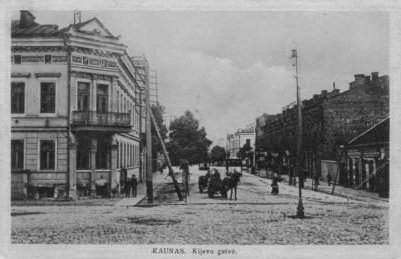
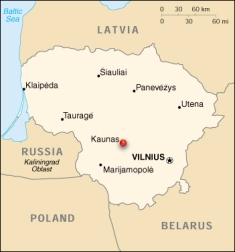
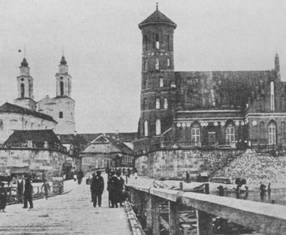
%20in%201922sm.gif)
